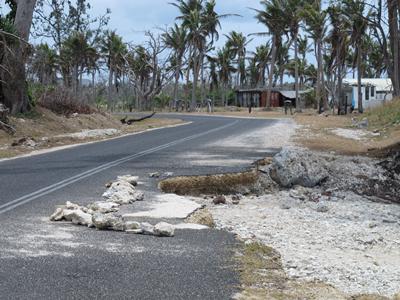A unique opportunity to build a long term record of cyclone activity in the western tropical Pacific. (NERC Urgency Grant)

This project is built on the unique opportunity provided by the recent Cyclone Pam, to quantify the biogeochemical signature of a specific and extreme (second lowest pressure recorded on earth) tropical cyclone; and to use this “fingerprint” to unequivocally identify past cyclones over longer (1-5ka) periods of time during which the key drivers of cyclogenesis in the tropical Pacific, are known to have changed. During El Niño and positive-phase Interdecadal Pacific Oscillation (IPO), countries such as Vanuatu, which under normal conditions lie within the South PacificConvergence Zone (SPCZ), experience increased tropical cyclone activity. However, the data on which these observations and models are based are short (<50-100 years). Lake sediment archives from the tropical south Pacific are rare, yet are known to contain coherent, long term records of environmental change and proxy data from which high resolution climate records can be extracted. On Efate island, Vanuatu, Lake Emaotul provides a unique opportunity to recover a long coherent lake sediment archive from within a key region of the wider Pacific climate system. It is known that on inter-annual to inter-decadal timescales pan-Pacific climate phenomena such as the ENSO and IPO cause the SPCZ to shift position. El Niño events and a positive phase SOI/IPO influence the SPCZ by shifting it northeast into a more zonalorientation. Climate modelling has suggested that with future global warming the SPCZ will more frequently adopt a zonal orientation, thus increasing the likelihood of extreme cyclone events impacting on Vanuatu. However, this understanding is based on relatively short and partial climate records from the region that do not include the extremes of ENSO observed in the lake sediment records. Thus a greater understanding of how the SPCZ and associated cyclone event frequency and magnitude have responded to global climate oscillations over multi-centennial timescales is vital for our understanding of Pacific cyclone activity in the past and in the future.
Key science questions include: (1) how often do events of this (or other) magnitude occur in this region, and; (2) how does event frequency and magnitude relate to large scale climate oscillations such as ENSO, IPO and the migration of the SPCZ?
